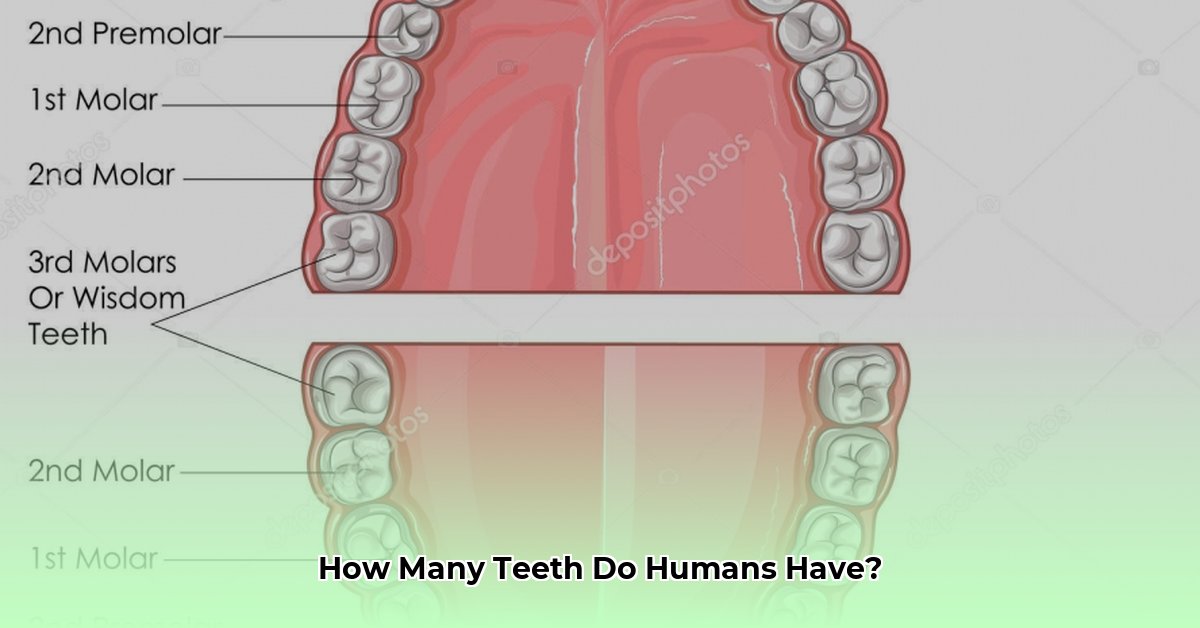Adults typically have 32 teeth, while children have 20. This article explores the different types of teeth, their development, and essential dental care tips.
Exploring Your Chompers: A Guide to Teeth
Let’s dive into the fascinating world of teeth! From those first baby teeth to the adult set (and those sometimes troublesome wisdom teeth), understanding your pearly whites is key to a lifetime of healthy smiles.
Types of Teeth and Their Functions
Each tooth type plays a specific role in chewing and speaking. Think of them as a specialized team working together to process your food.
| Type of Tooth | Number in Adults | Function |
|---|---|---|
| Incisors | 8 | Sharp, chisel-like teeth at the front, designed for biting and cutting food. |
| Canines | 4 | Pointed teeth next to the incisors, ideal for tearing and gripping tougher foods. |
| Premolars | 8 | Transitional teeth between canines and molars, assisting with both tearing and grinding. |
| Molars | 12 | Large, flat teeth at the back, perfect for grinding and crushing food. |
A simple diagram illustrating the location of each tooth type would greatly enhance this section. (Consider adding a visual here in your final version).
Baby Teeth: The Foundation for a Healthy Smile
Children typically have 20 baby teeth, also known as primary or deciduous teeth. These teeth erupt between six months and three years of age. While eventually replaced by permanent teeth, baby teeth are crucial for:
- Chewing: Enabling children to eat a variety of foods.
- Speech Development: Aiding in the formation of sounds and words.
- Guiding Permanent Teeth: Acting as placeholders and creating space for the adult teeth.
Wisdom Teeth: The Late Arrivals
Wisdom teeth, or third molars, typically emerge between 17 and 25, although some people may never develop them. Due to changes in jaw size over time, wisdom teeth often lack sufficient space, potentially becoming impacted (trapped beneath the gums). Impacted wisdom teeth can cause pain, infection, and crowding, making extraction a common procedure. Some experts suggest prophylactic removal (removal before problems arise), while others suggest waiting and removing only if a problem arises. There is ongoing debate as to their function in modern humans. Current research suggests their existence may be explained by evolutionary changes in diet and jaw size.
Maintaining a Healthy Smile: Essential Dental Care
Regardless of your age or the number of teeth you have, good oral hygiene practices are crucial for maintaining healthy teeth and gums.
- Brushing: Brush twice daily with fluoride toothpaste, using gentle, circular motions.
- Flossing: Floss once a day to remove plaque and food particles from between teeth and along the gum line.
- Rinsing: Using a therapeutic mouthwash can provide additional protection against bacteria and gum disease.
- Diet: Limit sugary snacks and drinks, as they contribute to tooth decay.
- Regular Dental Checkups: Visit your dentist for professional cleanings and checkups every six months. They can identify potential issues early on and provide personalized advice.
Disclaimer: This information is for educational purposes only and does not constitute medical advice. Consult a qualified dental professional for personalized guidance and treatment.
- Green Bento Box Reinvent Your Lunchtime Meal Prep - December 28, 2025
- Mini Bento Boxes For Packing Kids Snacks And Small Meals - December 27, 2025
- Small Bento Box Makes Packing Lunch Easy and Fun Again - December 26, 2025










